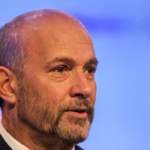How To Do Payroll For Remote Employees
Remote work is a growing trend. Telecommuting isn’t reserved for home-based startups or contractors.
Now, 55% of remote workers telecommute full-time. What does this mean for you, as an employer? You’re tasked with doing their payroll and you’ll face challenges doing payroll for remote employees versus traditional ones.
Don’t worry, the web makes it easy to perform payroll duties for remote employers with the use of online paystub and tax form creators.
Here’s how payroll works for remote employees and why you should use an online paystub and tax form creator.
Doing Payroll By Employee Classification
In the United States, most employees are classified by the tax forms they receive. You can hire workers by these statuses:
- Company employees (they receive a W-2 form)
- Independent contractors (they receive a 1099 form)
These two workers have one main difference: you’re responsible for paying company employee taxes and not taxes for an independent contractor. The W-2 form you give employees, details the wages they were paid for the year, as well as how much tax was subtracted from their yearly wage.
A 1099 form details how much you paid the contractor for the year. Since you’re not paying their taxes, you’re not responsible for reporting this on their tax forms. You can easily generate both W-2 and 1099 forms online.
In addition, some of the contractors you hire or outsource can be businesses. These contractors usually establish themselves as businesses and charge you for goods and services that reflect on their business. You’ll still report their wages paid similarly as an independent contractor.
Also read: What Are The Ways To Better Manage Payroll In Your Business?
When Doing Payroll For Remote Employees Becomes Difficult
There are many similarities when doing payroll for in-house employees versus remote employees. However, you’ll run into some unique challenges. Below are some examples.
Also read: 10 Things You’ll Need from Each Employee to Achieve Efficient Payroll Processing
Out-Of-State Workers
Since you can hire employees from anywhere in the country, you’ll likely hire some out-of-state employees. You can save money because you don’t need to worry about relocation costs. However, there are some extra steps in the payroll process. The biggest hurdle is reporting taxes. Each state has different tax laws and requirements.
For example, some states require paying state income tax while others do not. It’s best you adjust your tax reporting for the state the remote worker(s) live in as opposed to the one your state is based in. This way, all taxes are reported on their W-2 form. Your worker will have an easier time doing their taxes.
Keep in mind, this may require you to register with the tax authority in that particular state. If you want to avoid this, you should stick to hiring remote workers in your state. What about freelance employees and independent contractors? Since you’re not reporting their taxes, you can avoid this problem.
Remote Employees In Another Country
As mentioned previously, your remote employees can be based anywhere. This includes even an entirely different country. Many companies choose to hire international contractors to access global talent pools. However, there are some additional complexities involved. First, you have to pay their wages in their home currency and report any exchange differences and extra costs associated with these exchange rates (if applicable — not all payment software and processing require this fee).
Can you avoid this? You can, only if you pay your employees through a service such as PayPal and only if you pay your employees using your home currency. However, there are some limitations; for example, you can usually only avoid the fee if you pay the employees with funds in your linked PayPal account or business bank account.
The currency difference will be reflected in the worker’s pay. For example, if you’re a company in the U.S. paying a Canadian employee USD600, the Canadian employee will receive about CAD785. What about paying taxes? Unless your business is established globally, you’ll have to establish your business in that country.
This means you have to comply with that country’s laws regarding minimum pay, overtime, and benefits, as well as paying and reporting that country’s taxes. What about international freelance employees? This depends on the country. More countries are developing a freelance visa that details the freelancers' obligations to work remotely in their country, especially when their client(s) is based in a different country.
The best course of action is to research the independent contractor’s country’s freelancing laws. If they have none, hold the remote employee accountable for paying their own taxes. You can also avoid this by hiring freelance workers from your country who live in another country. For example, if your business is based in the U.S., you can hire an American freelancer who’s an expat in Europe.
This way, you only have to worry about reporting U.S.-based taxes since your freelancer is still a U.S. citizen.
What About Pay Stubs?
As an employer, creating a pay stub for your remote employees will help them understand their earnings. If any of their money is going to taxes, a pay stub will let them know what percentage of their earnings go to taxes and what they take home. Creating a pay stub is easier now than ever. You can generate a pay stub online and email the pay stub to your remote employees.
Always include this information on a pay stub:
- Gross pay
- Federal taxes withheld
- State taxes withheld
- Local taxes withheld
- FICA
- Benefit insurance deduction
- Wage garnishments (if any)
- Retirement plan contribution
- Net pay
- Back pay
What about your freelance employees? You can provide a pay stub proving you paid them for a given time period.
Also read: 12 Ways Payroll Data Can Help Your Small Business Save Money
How Payroll Works For Remote Employees: It’s Easier Than You Think!
More workers are switching to remote work. Whether your remote workers are full-time employees or freelancers, you should know how payroll works for each.
Be sure to utilize online resources, such as online pay stubs and tax form generators that will help ease out some of these complexities. Try us out today and you won't be disappointed. Create your paystubs with our paystub creator easily in minutes!















